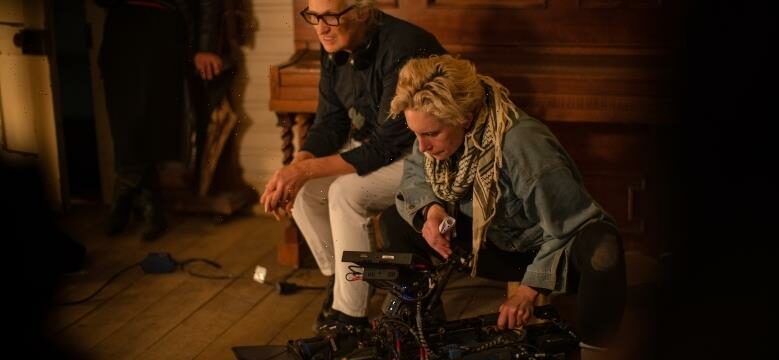The industry is continuing to make gains when it comes to hiring women directors and directors of color, but Hollywood is still a long way off from parity. While last year saw a 15-year high in the share of films directed by people from underrepresented ethnic groups, nearly all of that increase came from male filmmakers. In fact, fewer than 2 percent of all top-grossing directors were women of color in the last decade and a half.
Those are some of the findings from the latest study from the USC Annenberg Inclusion Initiative, which was released Wednesday. Titled “Inclusion in the Director’s Chair: Analysis of Director Gender & Race/Ethnicity Across 1,500 Top Films from 2007 to 2021,” the study reveals that early-pandemic gains in behind-the-scenes equity has continued and that streamers are leading the effort to hire Asian, Black, Latino, and multiracial directors.
The study primarily looked at the highest-grossing theatrically released fictional films from the last 15 years. Among all films from that time period, women directed 5.4 percent. 2020 saw the greatest uptick in female-helmed films, 15 percent, followed by a slight dip to 12.7 percent last year.
Last year, 27.3 percent of the top films were directed by underrepresented filmmakers, compared to 17.5 percent in 2020 and 12.5 percent in 2007. U.S. Census data shows that 39.9 percent of the population belongs to those underrepresented groups.
“This is the first time we feel comfortable putting out the research really understanding the box office and hiring practices in light of the pandemic,” Dr. Stacy L. Smith, the study’s lead author and founder of the Inclusion Initiative, said in an interview. “We have sustained change for women directors, with a high in 2020 and a dip in 2021, we are solidly now in the double digits for the first time since we’ve been doing this study. That is a function of the 4 Percent Challenge and major advocacy work. We’re far off from equality, but this is a great step.”
And yet, among those underrepresented directors, the vast majority are men. Last year, women of color directed just three of the top-grossing films: Chloe Zhao (“Eternals”), Liesl Tommy (“Respect”), and Nia Costa (“Candyman”). And only 18 women of color were attached to the top films from 2007 to 2021, representing just 1.2 percent of those top directing jobs, despite the fact that women of color make up 20 percent of the U.S. population.
Universal was most likely to hire a woman of color, it distributed 27.8 percent of those 18 films. Lionsgate and STX have not worked with a woman of color director on a top-grossing film from that time frame, according to the study. The data suggests this has nothing to do with the aptitude of female directors of color. Their films have significantly higher median Metacritic scores (62.2) compared to white men (54.2), according to the study.

Chloé Zhao directs “Eternals”
While theatrical studio tentpoles have offered few directing opportunities for underrepresented women, the picture is brighter among streamers, both for women and women of color. The study looked at the original film slates from major streamers over the last two years and found that women of color were much more likely to be hired as directors there compared to on a top-grossing theatrical film.
Amazon Prime led the pack, 15 percent of its films were directed by women of color. That’s compared to the top-grossing theatrical films of the last two years, of which women of color directed 5.3 percent. At Disney+, it was 9.7 percent, 5.3 percent at Netflix, and 4.9 percent at Universal.
Female filmmakers in general fare better at streamers, too, and those outfits are far more likely to hire a female director than the studios. Amazon Prime again leads when it comes to hiring female directors, as 37.5 percent of its original films during the studied period were directed by women. (Disney followed with 29 percent, HBO Max with 19.5 percent, and Netflix with 18.1 percent).
“The legacy studios have a real problem on their hands,” Smith said. “The one group that we don’t see any movement in with the legacy studios is women of color directing these large-scale movies … the streamers understand who their consumers are, they’re creating and distributing content for a very different world than the legacy studios are operating in. They either need to get on board — the world has changed — or their relevancy will continue to flail and diminish rapidly.”
Smith said the Inclusion Initiative wanted to be part of the solution. On Wednesday, the initiative launched its AI² Accelerator, a $25,000 scholarship that will be awarded to a woman of color in film school to use toward her student film. It’s aimed toward aspiring filmmakers who want to work on large narrative films, such as those driven by VFX and IP.
The recipient will meet with an all-star roster of advisers throughout her senior year, including Universal chairman Donna Langley, Marvel Studios President Kevin Feige, Halle Berry, and many more leaders in the publicity, management, production, and creative sectors of the industry.
“We’re hopeful that companies and philanthropists will match this scholarship and we’ll be able to exponentially give resources not only this year, but in the years to come, in order to flood the talent pipelines with women of color,” Smith said.
The study is the latest from the Annenberg Inclusion Initiative, which produces an updated report annually, and can be found here.
Source: Read Full Article

